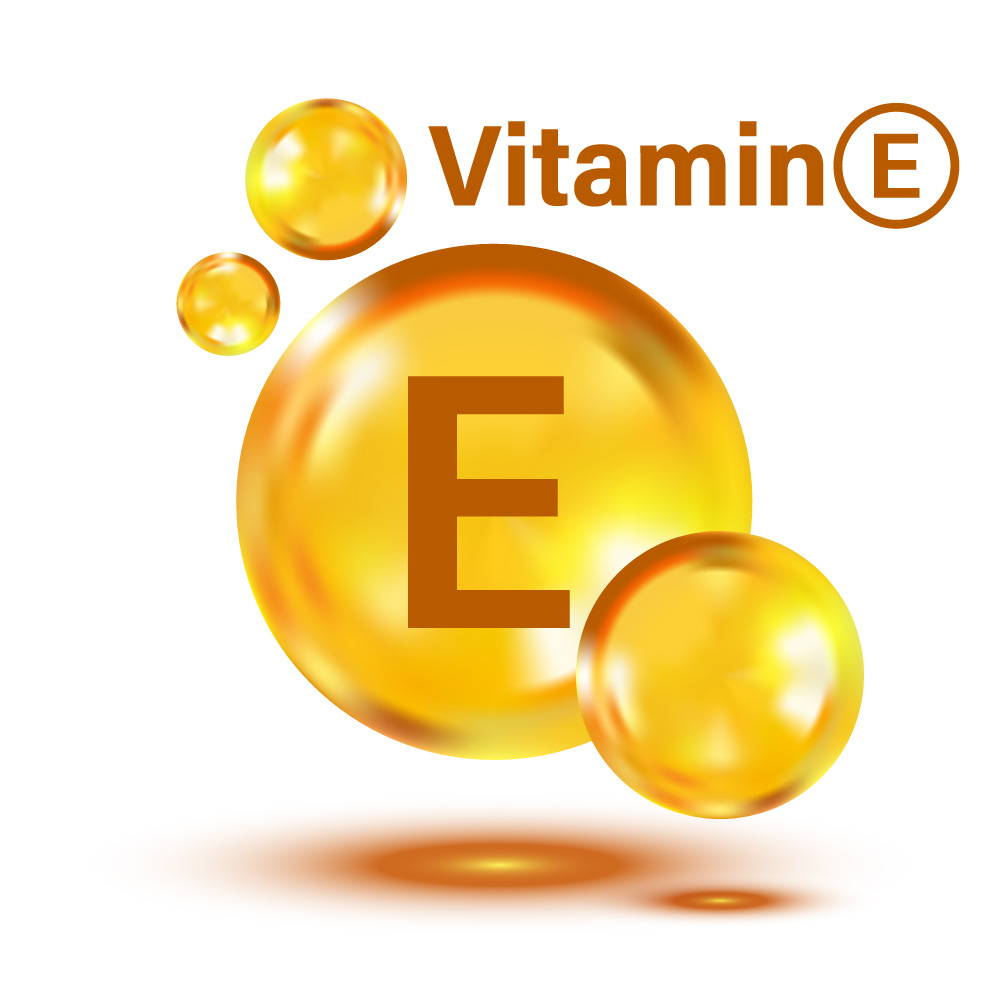SUPPLEMENT - VITAMIN
Explore our effective micro-nutrients and premium ingredients

What is vitamin E and what does it do?
How much vitamin E do I need?
LifeStage | RecommendedAmount |
Birth to 6 months | 4 mg |
Infants 7–12 months | 5 mg |
Children 1–3 years | 6 mg |
Children 4–8 years | 7 mg |
Children 9–13 years | 11 mg |
Teens 14–18 years | 15 mg |
Adults | 15 mg |
Pregnant teens and women | 15 mg |
Breastfeeding teens and women | 19 mg |
What happens if I don’t get enough vitamin E?
What are some effects of vitamin E on health?
Cancer
Heart disease
Eye disorders
Mental function
Can vitamin E be harmful?
Where can I find out more about vitamin E?
References
1. Traber MG. Vitamin E. In: Shils ME, Shike M, Ross AC, Caballero B, Cousins R, eds. Modern Nutrition in Health and Disease. 10th ed. Baltimore, MD: Lippincott Williams & Wilkins, 2006;396-411.
2. Traber MG. Vitamin E regulatory mechanisms. Annu Rev Nutr 2007;27:347-62. [PubMed abstract]
3. Sen CK, Khanna S, Roy S. Tocotrienols: vitamin E beyond tocopherols. Life Sci 2006;78:2088-98. [PubMed abstract]
4. Dietrich M, Traber MG, Jacques PF, Cross CE, Hu Y, Block G. Does γ-tocopherol play a role in the primary prevention of heart disease and cancer? A review. Am J Coll Nutr 2006;25:292-9. [PubMed abstract]
5. Verhagen H, Buijsse B, Jansen E, Bueno-de-Mesquita B. The state of antioxidant affairs. Nutr Today 2006;41:244-50.
6. Institute of Medicine. Food and Nutrition Board. Dietary Reference Intakes: Vitamin C, Vitamin E, Selenium, and Carotenoids . Washington, DC: National Academy Press, 2000.
7. Health information data from U.S. National Institutes of Health
Better than others
Nine medical doctors used their research findings to develop Dr’s Grow UP in the biotech lab. The result is a product containing 22 ingredients mixed in the perfect proportions to maximize bone health and height development.
Why Bone Science?
Science-Backed Formulations
Carrying out extensive research and keeping up-to-date with the latest scientific findings is our key to develop superior formulations.
Best Growth Support for Kids & Teenagers
Our products contain essential ingredients for a healthy bone and height development of kids from 10 years and teenagers.
Fighting Aging Effects
We are dedicated to create formulations that delay and restrict the extent of adult’s bone density decrease.
Unmatched Product Quality
Only 100% natural ingredients that contain no soy, no gluten, no GMOs, no maltodextrin, and no artificial flavors, colors, or preservatives.
Product Safety
All of our products are manufactured in the US in an FDA and NSF cGMP registered facility.
